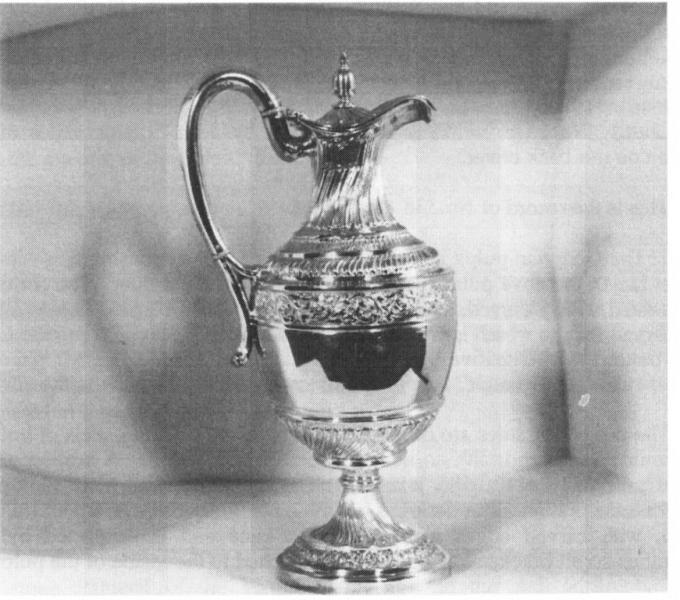- The Georgian pulpit is a six sided drum
of framed construction with one facet facing the
nave pillar and one on hinges forming a door.
The cornice is decorated with a carved, straight
dentil moulding immediately below a band of
carved foliage which is repeated at the bottom of
the cornice and the top of the bottom rail. The
five visible facets have two fielded (raised)
panels, a square above a rectangle, surrounded by
carved foliage, similar to the cornice.
The projecting stiles are decorated with
recessed oblong panels of holly in a moulded
surround with an inlaid pattern of burr walnut.
A section on the right hand panel of the door is
missing. The back facet has a plain sunk panel
with no decoration. The desk has a plain
rectangular book board and a book stop, with
carved edges matching the cornice and is
supported by two acanthus scroll brackets. A
bookrack is attached to the inside of the pulpit,
to the right of the desk.
Metal Furniture. There are two extended
hinges at the top and bottom of the opening panel
and part of a flat, fiddle-shaped bolt at the
centre of the opening side; the end of the bolt,
which would have been connected with the front
panel, and the knob on the exterior of the door
are missing.
The Georgian pulpit is supported by a
plain panelled drum of a later date with a
straight stairway of four treads with no hand
rail on the east side, leading to the opening
facet of the pulpit. -
Oak, holly, burr walnut, metal.
- 1726
- Pulpit ht. 121cms. x diam. 107cms
Base ht. 290cms. x diam. 107cms
- Designer Robert Fretwell of Potterton
(ref.a)
Joiner William Bradley (ref.a)
- - (blank)
- The pulpit was made in 1726 as part of
the 1724 - 26 renovations to the Church recorded
in the Parish Register. The Rector, Mr. Edmund
Barnaby, gave ten guineas towards the cost. It
was altered in 1747 by Robert Cawood and Sam
Hague, and repeated in 1839 when two pieces of
paper, one dated 1726 and the other 1747, were
found nailed underneath giving information about
the making of the pulpit. (ref.a)
- -
- - (blank)
- (a) Butcher page 30-31
|


